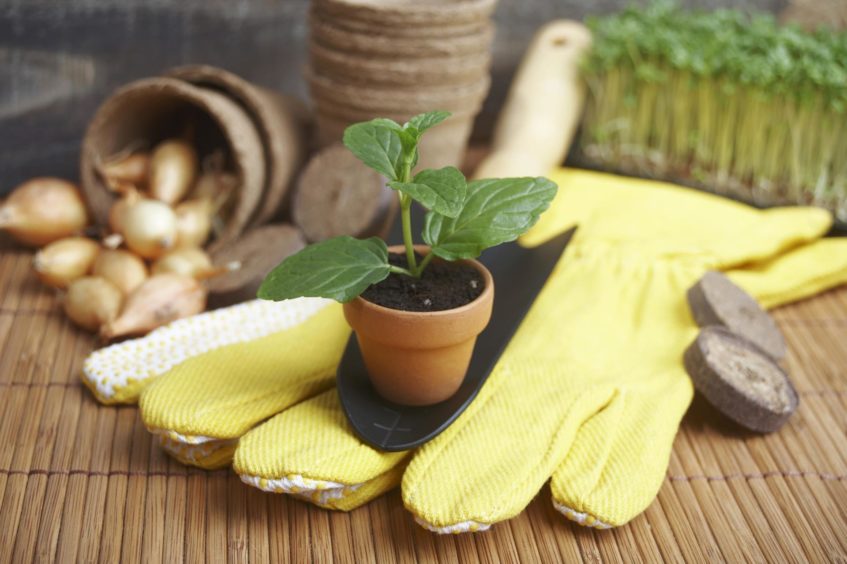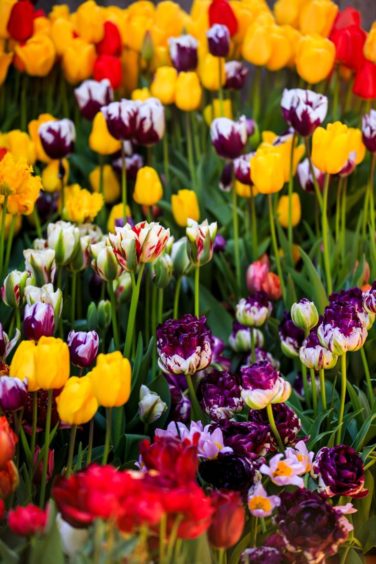I’m so glad I’ve got my wee glasshouse. I could argue it’s a bit of luxury but in true “tight Scotsman” fashion I got it for free by helping transplant an apple tree to a friend’s new house. I’m happy with that, says Brian Cunningham.
I keep my alpine bulb collection in here plus a few pots of Primula allionii that, in their natural habitat, grow on the mountains of southern France and northern Italy. They require some undercover protection with us. This is where I also grow my tomato and cucumber plants. If I’m being honest, I know I’m not making the most of this space – not yet anyway – but I see the glasshouse as an investment and will, one day.
It still plays an important part in the gardening I do at home and, while the weather is so miserable, it’s the perfect place to be as I get it set up for the winter.
You might think the plants from the mountain tops that I’m growing in my glasshouse wouldn’t mind if the temperature was to go below zero – but that’s not the case. The snow that will cover them over the winter months acts as an insulating layer, so I need to do something similar to keep this growing space frost-free and not allow the temperature to drop below the freezing point.
Wrap up warm
First job I intend to do is to fit a layer of bubble wrap insulation on the inside of the glasshouse which will help prevent heat loss. It’s amazing how much the glasshouse can warm up even on a sunny winter’s day, so make sure you do this job in a way that you can still open any vents to allow air to circulate when required.
This’ll be a big help, but there will still be times over the winter when it could get cold enough that I have to provide a bit of heating.
I could run an electric heater – but the thought of seeing the dial on my meter spinning round faster than Superman getting changed in a phone box is making me feel unwell. To be fair, an electric heater with a thermostat set to come on at around three degrees is actually very efficient if you are growing the kind of plants that need this.
I’m not able to run an electricity supply to my glasshouse so have a paraffin heater when I need it but, of course, there’s still a cost involved there, too. To help prevent damp problems for the plants that could result from using one of these heaters, again provide ventilation. Some clean air is essential and will also get rid of the whiff of fumes, too.
Although we are providing a bit of warmth in the glasshouse it may not be enough to protect any water pipes from freezing and bursting. It’s worth turning off the water supply to them and any outdoor taps or at least make sure any exposed pipes are lagged with foam insulation that easily slips around them.
Fellow gardeners, this is a job you don’t want to forget. I’m talking from experience here so believe me when I say there is nothing nice about having to run through freezing water spraying everywhere on a cold winter’s day to reach that cut-off tap.
Once I’ve knocked these jobs off the list then that’s the glasshouse ready for its winter role.
Mouse watch
As well as the alpines, I’ve also potted up some garlic cloves and onion sets which I’ll over-winter in here. You’ll be amazed that even though the light levels are poor and the temperatures low, these plants will put on enough growth over winter to give them a head start when planted out come spring as things get going again.
I’ll be watching out for the mice, though, they’ll not be put off by the risk of bad breath and quite happily go for my crop.
I’ll squeeze my outdoor container plants into the glasshouse, too, over winter to help protect the roots from freezing. Being above ground, they are more exposed.
If you don’t have the shelter to do this, instead huddle all your plant pots together like penguins in the Antarctic or simply use the same insulation for the glasshouse to wrap around the pot.
Jobs for the weekend
Plants which don’t have deep root systems are at risk of being damaged by the stronger winds we can now expect over the next few months. Give any roses you have a wee trim and cut back stems of the butterfly bush by as much as a half to reduce this risk and which will also neaten them up for the winter.
November is also the best time to plant tulips for a colourful spring flowering display. We wait until now to reduce the risk of problems with tulip fire disease. If your bulbs get this, you’ll recognise it by their leaves having brown spots and becoming all distorted and withered, the appearance as if scorched by fire.
- Brian Cunningham is a presenter on the BBC’s Beechgrove Garden. Follow him on Twitter @gingergairdner












